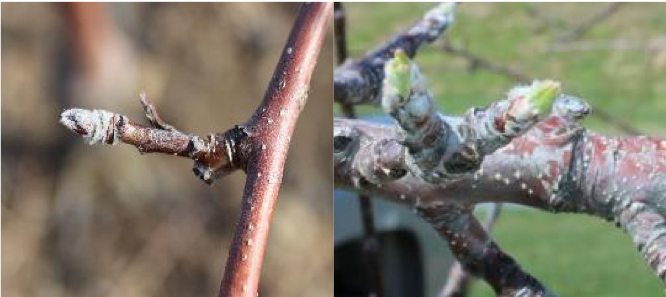Apple Disease Update: Late Silver Tip + Green Tip
go.ncsu.edu/readext?587560
en Español / em Português
El inglés es el idioma de control de esta página. En la medida en que haya algún conflicto entre la traducción al inglés y la traducción, el inglés prevalece.
Al hacer clic en el enlace de traducción se activa un servicio de traducción gratuito para convertir la página al español. Al igual que con cualquier traducción por Internet, la conversión no es sensible al contexto y puede que no traduzca el texto en su significado original. NC State Extension no garantiza la exactitud del texto traducido. Por favor, tenga en cuenta que algunas aplicaciones y/o servicios pueden no funcionar como se espera cuando se traducen.
Português
Inglês é o idioma de controle desta página. Na medida que haja algum conflito entre o texto original em Inglês e a tradução, o Inglês prevalece.
Ao clicar no link de tradução, um serviço gratuito de tradução será ativado para converter a página para o Português. Como em qualquer tradução pela internet, a conversão não é sensivel ao contexto e pode não ocorrer a tradução para o significado orginal. O serviço de Extensão da Carolina do Norte (NC State Extension) não garante a exatidão do texto traduzido. Por favor, observe que algumas funções ou serviços podem não funcionar como esperado após a tradução.
English
English is the controlling language of this page. To the extent there is any conflict between the English text and the translation, English controls.
Clicking on the translation link activates a free translation service to convert the page to Spanish. As with any Internet translation, the conversion is not context-sensitive and may not translate the text to its original meaning. NC State Extension does not guarantee the accuracy of the translated text. Please note that some applications and/or services may not function as expected when translated.
Collapse ▲Silver tip and green tip should soon be observed in apple orchards throughout NC and green tissue may already be showing in some warmer production regions of the state. Given the importance of late silver/green tip applications for canker blight management, this week would be a good time to de-winterize your sprayers and get them calibrated. For further information on airblast calibration, check out the 2019 SE Orchard Management Guide, or the New England Tree Fruit Management Guide.
The primary goal of disease management programs at late silver tip and early green tip in apple is to protect against fire blight cankers that will begin to ooze later in the season (likely not before pink bud or bloom). A full rate (the higher rate on the label) of a fixed copper (e.g. Kocide 3000, COCS, Badge + several others) should be applied no later than green tip for canker blight management. Delaying applications of copper until 1/2″ green tip or beyond will increase the risk of chemical damage to developing tissue.
Coppers that are “fixed” have are more insoluble in water than soluble coppers (e.g. copper sulfate), which means that they should persist on leaf tissue longer during a rain event. With fixed coppers, copper ions, the toxic component of copper fungicides, will slowly be released during wetting events which is advantageous when you consider the time period between green tip and pink/bloom may be greater than 30 days. When applying copper at late silver/green tip, consider the following:
- Always follow the label-It’s the law.
- Choose spray adjuvants wisely (or do not use them at all). Penetrating adjuvants or those that cause excessive wetting can enhance the penetration of copper into leaf tissue (which is where you don’t want it to be).
- Check the pH of your spray solution. Low pH will result in coppers becoming more soluble and thus could reduce the residual activity of the fungicide and enhance the potential for phytotoxicity.
- The addition of hydrated lime can raise the pH of spray solutions, and can also assist in “fixing” more soluble coppers. Check with your chemical sales rep to determine if you should add hydrated lime to your copper application.
- Avoid applying copper under slow drying conditions.
- Again-Do not apply high rates of copper after green tip!
In addition to applying copper for canker blight management, copper is also applied at the green tip stage to manage early apple scab infections. Below is a list of example coppers and rates of these coppers registered for management at the silver tip/green tip stage. As always, read the label before application!
| Example Trade Name | Active Ingredient | Rate (amount/acre; silver/green tip only) | Metallic Copper Equivalent |
| C-O-C-S WDG | Copper Oxychloride + Basic Copper Sulfate | 8.0-11.7 lb | 51.25% |
| Kocide 3000 | Copper Hydroxide | 3.5-7.0 lb | 30% |
| Champ WG | Copper Hydroxide | 8.0-12.0 lb | 50% |
| Nu-Cop 50WP | Copper Hydroxide | 12.0 lb | 50% |
| Nu-Cop XLR | Copper Hydroxide | 8.4-48.0 pt | 10.0% |
| Badge SC | Copper Oxychloride + Copper Hydroxide | 3.5-7.0 pt | 20% |



